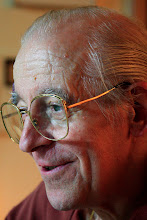Nel corso dei secoli, mentre il Buddhismo si spargeva nell’intera Asia, venivano attribuiti al sari poteri magici. Nel XVI secolo l’enciclopedia medica Bencao Gangmu (本草綱目) scritta da Li Shizhen (李時珍, 1518-1593) della dinastia Ming (明朝, 1368–1644), dice che il sari puo’ essere frantumato solamente da un corno di antilope. Lo studioso coreano Yi Kyu-gyong (李圭景, 이규경, 1788-1856) spiega che essendo il sari formatosi come il risultato di una grande energia yin (陰), cioe’ il principio cinese della passivita’ femminile, puo’ essere distrutto solamente se toccato da un corno di rinoceronte, il materiale rappresentativo dell’energia attiva della mascolinita’ dello yang (陽). Evidentemente, nel corso dei secoli, parecchi sono stati coloro che hanno cercato di sfruttare a loro vantaggio il potere sopranaturale del sari.
Un libro di storia della dinastia coreana dei Koryo (高麗國,고려국, 918-1392), parla del monaco Hyoga che usava ingannare il popolo facendoli credere che il sari, prodotto nel suo corpo durante l’illuminamento, non era nient’altro che miele mescolato con farina di riso. Nel 1313 il monaco veniva condannato ad una pena severa.
Nel XVIII secolo il famoso studioso coreano Yi Ik (李瀷, 이익, 1681-1763) criticava i monaci Buddhisti che pretendevano di trovare sari fra le ceneri dei morti. Diceva che sari venivano raramente trovati nel passato, mentre oggi sono molto comuni al punto che i monaci li trovano facilmente e poi costruiscono torri votive in modo da attirare i fedeli ai loro templi. Yi Ik addiritura affermava che alcuni monaci denunciavano uno contro gli altri in modo da stabilire se i sari contenuti nelle torri votive erano veri o falsi.
Oggi la scienza e’ in grado di dimostrare che i sari sono semplicemente che il risultato della disintegrazione di un corpo durante il processo di cremazione, che non ha nulla a che vedere con l’illuminamento Buddhista. Uno studio pubblicato nel 1995 in un giornale di medicina legale dice che sostanze cristalline possono formarsi durante la cremazione di un corpo umano a causa dell’incenerimento dei femori ad una temperatura superiore ai 1400 gradi Celsius. Evidentemente, i Buddhisti leggendo le parole del Buddha credono che i sari rivestono sempre un ruolo importante nella fede e milioni di pellegrini viaggiano ogni anno attraverso l’Asia per vedere le torri votive dei sari ed i santuari a loro dedicati.

Il grande monaco Buddista Popchong (1932-2010) e’ entrato in nirvana l’11 marzo scorso ed il suo corpo e’ stato cremato il 13 marzo. Persino nella morte il grande monaco ha dato la sua ultima lezione di come vivere una vita senza possesso. Ha chiesto che il suo corpo venga cremato in semplicita’ e la cremazione e’ stata davvero semplice: il corpo del monaco giaceva nel suo letto di bambu, coperto da un semplice e disadorno lenzuolo, posto in cima ad una pira funeraria. Le parole del monaco in punto di morte non sono certamente da dimenticare, “non cercate nemmeno minimamente sari fra le mie ceneri e non costruite nessuna torre votiva a mio nome.”
Popchon fu uno dei piu’ grandi capi spirituali dei nostri tempi, una figura che induce rispetto ed ammirazione sia dai Buddhisti che dai non Buddhisti. Ha vissuto la vita che predicava. La sua vita fu una continua meditazione sul concetto di possedere nulla di nulla. Insegnava che possedere qualcosa significa essere legati da quello che si possiede e continuamente ricordava a tutti l’ossessione del possedere chiedendo a tutti di lasciar perdere. Viveva in una piccola e modestissima capanna nelle montagne della provincia di Kangwon (江原道, 강원도). Non aveva mai trascorso la notte nel tempio Kilsang a Seoul, da lui fondato. Dopo le rare apparizioni in pubblico lasciava la citta’ per ritornare fra le sue montagne.
Come molti grandi capi spirituali del nostro tempo, Popchong era attivamente coinvolto nei problemi sociali. Aveva vissuto un ruolo attivo nel raggiungimento della democrazia in Corea. Era a capo del gruppo promotore della vita, carita’ e conservazione ambientale. Lavorava alla promozione dei rapporti fra le differenti religioni. Spesso ricordava, i coreani oggi possiedono una ricchezza materiale come mai prima d’ora, ma sono davvero felici per quello che possegono? Nella sua morte Popchong ancora una volta ci pone la domanda. Ha chiesto che tutti i libri che ha scritto non vengano mai piu’ pubblicati. Nel lasciare questo mondo, non ha voluto lasciarsi dietro nulla, persino il suo nome o la sua memoria.
Si spera che tutti noi continuiamo a ricordare ed ispirarsi a Popchong, alla sua vita esemplare ed ai suoi insegnamenti. Le sue parole ci ammoniscono che rimanere focalizzati su tesori materiali come i sari serve solo a distrarci dalli obblighi spirituali della nostra fede.
Seoul, Korea
Photo by Chong Myo-hwa
28 marzo 2010





